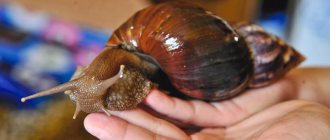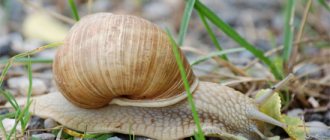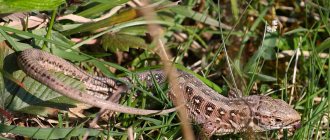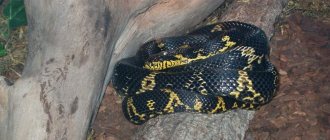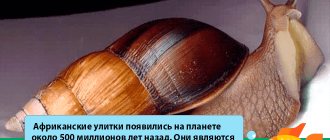Domestic land snails, especially the giant African Achatina, have long been transformed from exotic representatives of the fauna into cute pets, which are often kept in ordinary city apartments. No less popular are aquarium mollusks, which you can watch with interest for hours. These pets are unpretentious in everyday life and reproduce in almost any conditions, but they are quite demanding in terms of nutrition and are even able to refuse food of poor quality. Therefore, future owners need to collect as much information as possible about what they can feed their domestic snails.
Description
Found in southeast and central Europe, it later settled in South America. Grape snails live in shady forests and parks. Helixes are also called greatbush, apple and moonflowers. They cannot live in water.
Look at this addition on Instagram
Addition, expansions Galina Gusarova (@_liya_31) 22 Gru 2022 r. about 4:03 PST
External structure
The abdomen reaches 10 cm in length, colored brown or beige. The skin is rough. The shell is up to 5 cm in diameter and has 4–5 whorls. The color of the shell is from brown to olive, the stripes are dark brown or light. The tentacles on the head help to sense the surrounding world and see at a distance of 1 cm.
Character and behavior
Shellfish are peaceful and slow-moving. They sleep during the day and are awake at night. In drought, too high and too low temperatures, they hibernate. Animals need to fall asleep for several months to maintain health. In their natural habitat, in the heat, grape snails hide among the leaves of plants and under stones.
Mode
Grape helixes need to hibernate. There are 2 methods:
- Follow the schedule for hibernating the snail, for example, every 3 weeks, immerse your pet in suspended animation for a week, gradually lowering the temperature.
- Simulate the same conditions as outside. If it rains, increase the humidity, if there is a drought, reduce the water supply, and if it gets cold, lower the temperature.
During hibernation, animals lose about 10% of their weight, but quickly regain it.
Lifespan
Grape clams live for about 10 years. If you take good care of them, they can live for 20 years.
Natural enemies of grape snails
Photo: What a grape snail looks like
Snails are quite defenseless creatures that many predators love to feast on.
Natural enemies of grape snails include:
- various predatory insects such as beetles, flies, crickets, centipedes.
- hedgehogs;
- shrews;
- mice;
- toads;
- frogs;
- lizards;
- birds;
- weasels and many other predators.
Grape snails can also be attacked by predatory snail species. Predators can easily chew through the strong shell or suck the snail out of its shelter. Many beetles and insects can crawl inside a shell through the breathing hole, catching it by surprise. Snails are also often parasitized by various small worms.
Snails can transmit parasitic diseases to pets and livestock, which may eat the snail. In addition to wild predators, snails are also used as food by humans. In many countries, snails are bred to be eaten. Grape snail meat is very nutritious, contains a large amount of protein and vitamin B12.
Grape snails are also susceptible to colds, especially after emerging from hibernation; they can withstand the cold, but for a short time, and quickly catch a cold if they do not hide in shelter in time. In addition, snails cannot tolerate bright sunlight; during drought they try to hide in the shade. Deforestation and urbanization negatively affect the population of grape snails, as the snails are thus deprived of their usual habitats.
Reproduction and breeding
Grape helixes reproduce in spring and autumn. To breed offspring at home, you need 2 grape snails. Stimulate suspended animation in winter. Mollusks must hibernate for 2 months. Environmental parameters for breeding:
| Temperature | 16–23 |
| Air humidity | 80–90% |
| Soil moisture | 80% |
During the breeding season, the clams make frequent stops and raise their heads, moving their horns in search of another adult. Mating lasts 1.5 hours. Mollusks lay eggs in the ground after 20–30 days. Grape snails produce 30–40 eggs at a time. Grape snail eggs are round and white. Future parents sprinkle the masonry with earth.
Remove the adults. Incubation time is 30 days. The hatched individuals are buried in the ground and feed on the contents of the eggs. You can return the parents when the snails reach 1.5 months of age.
Feed small grape snails with home-ground plant food. They need a lot of calcium at this stage of growth. It is known that only 5% of mollusks survive to sexual maturity.
Snail farming has become a business that is carried out using three methods.
Extensive method
Natural conditions are created for the breeding of snails. The rate of birth of offspring is low. For small farms.
Intensive method
Grape clams are grown in a large room with regulated humidity and temperature. Suitable for rapid propagation on an industrial scale.
Semi-intensive method
Shellfish are bred in open-air farms. The gain is less than with the intensive method.
Interesting Facts
Some of them:
- The fastest grape snail moves at a speed of 7 mm per second.
- They move easily not only on horizontal planes, but also on vertical walls.
- Footage of snails mating is very popular; there are many such videos on the Internet, but not everyone knows that individuals exchange only male cells, since these mollusks are hermaphrodites.
- On the coat of arms of one of the Swiss communities there is an image of a grape snail.
- Helicidin, a substance prepared from the body of a gastropod, has a bronchodilator effect.
- Only 5% of grape mollusks reach maturity, the rest die.
- These mollusks have no color in their blood.
- The first farms for growing grape snails appeared in the first century AD.
Snail farm
Grapes, like representatives of the related species Helix aspersa maxima, are bred on farms in large quantities. The site is prepared for the farm: trees are removed and the land is treated to remove pests. The land area reaches 300,000 square meters. m. The territory is fenced with a fence, the underground part of the fence is placed 0.5 m deep. Under the influence of natural conditions, mollusks hibernate and receive food and moisture. In extreme cold, animals are covered with film to prevent them from freezing. When the grape snails reach their maximum size, they are prepared for transportation.
Habitat in nature
Under natural conditions, snails live in green meadows, forests with thick grass and sparse trees, or in gardens.
They prefer areas with limestone or chalky soil that is naturally alkaline. Cold-blooded creatures wait out dry periods by hiding under boulders, in damp moss or thick grass. For the winter they go into suspended animation, climbing inside the shell. The snails close the entrance to it with mucus.
Photo
External structure
Externally, the snail consists of a body and a shell. In this case, the soft part is divided into a head with two pairs of tentacles and a leg. Inside, the mantle surrounds the organs.
The volume of the shell is sufficient for the body to fit completely inside it. In an adult, the shell grows to a diameter of three to four and a half centimeters. The shell type is a dexiotropic turbospiral, in other words, a right-curved spiral consisting of four and a half turns that lie in different planes.
The color is most often monochromatic, with a gradation from yellow-brown to brown and white. Along the length of the first two or three whorls, alternating dark and light stripes are observed. The intensity of the color is related to nutrition, light and habitat, helping the mollusk to camouflage itself from predators.
The surface of the sink has ribs, which allows moisture to accumulate. This also affects the strength and weight of the shell.
The length of the leg in an unstretched state of an adult can be up to five centimeters. The elastic structure of the body allows you to stretch up to nine centimeters.
The color of the body, as well as the color of the shell, is associated with what the grape snail eats. But in most cases it has a beige-brown tint, sometimes there are dark gray tones. The surface of the skin is wrinkled and resembles quadrangles, which allows it to retain fluid.
At the end of the rear tentacles are eyes containing photopigment, due to which the mollusk cannot distinguish colors. Visual acuity allows you to see objects at a distance of one centimeter. It is also possible to react to lighting intensity. These tentacles are very mobile and can form an obtuse angle. The length of the processes reaches two centimeters.
The purpose of the front tentacles is the function of smell. Their size is small, two and a half to four and a half millimeters. This pair of processes is not as mobile as the posterior ones - movements are possible only in the vertical direction. However, both pairs hide inside when they come into contact with something.
Adviсe
- Do not wash shellfish in tap water, as the liquid contains impurities and chlorine.
- Fill the bathing bowl with cooled boiled or settled water.
- If the shell breaks down and looks shabby, then there is little calcium in the diet. If this element is lacking, the snails also scrape each other’s shells with their teeth.
- Don't keep your pets in a cardboard "house". Cardboard is not moisture-resistant; a snail can gnaw a hole in such a tank and crawl away.
- If you do not need offspring, but several grape snails are kept together, remove and freeze the eggs in time.
The good thing about snails is that they are silent, do not take up much space, do not cause allergies, and are interesting to watch. The grape snail, unlike Achatina, can be found on the street and brought home. It is important that the individual looks healthy and that the shell is intact.
Previous
InhabitantsTurtle from the Red Book - European swamp
Next
InhabitantsSecrets of nutrition of aquatic and land turtles
Nutrition
The vine snail is considered a pest of garden plants, which it eats in large quantities, causing significant damage.
Feeding her is not difficult at all. Pets should be given fresh fruits and vegetables, herbs and weeds. You can include beets, pumpkin, carrots, zucchini, lettuce, cabbage, apples, potatoes, bananas, strawberry leaves, dandelion, grapes, nettles, burdock, and horse chestnut in the clam's diet. Soaked bread, dried bloodworms and daphnia are often used as additional additives.
Clams require large amounts of calcium to form their shells. Therefore, they need to be given chalk or sepia (pieces of cuttlefish shell).
All products must first be cut into small pieces or slices to make it easier for the snails to eat.
You should not put a lot of food in a bowl, because a small creature needs just a little bit to eat.
Food can be given in the evening and leftovers removed in the morning.
Grape snail at home Video
List of prohibited products:
- Radish;
- boiled eggs;
- any citrus fruits;
- onion;
- radish;
- fried and spicy foods;
- cheese and cottage cheese;
- flour products.
Internal structure
In representatives of these mollusks, breathing is carried out through a special opening - a pneumostome, on the side of the shell whorls between the folds of the mantle. The frequency of opening and closing of the breathing hole depends on the surrounding humidity. Normally it is one minute. Frequent breathing indicates an increase in carbon dioxide levels in the air. A longer period of time occurs with excessive air humidity.
In addition to the lung, the snail has:
- The digestive system consists of two intestines: the middle and the foregut
- The heart, which is divided into the ventricle and the left atrium (they are surrounded by the pericardium)
- Excretory system with one kidney
- Nervous system
- Hermaphroditic reproductive system
Semantics
The vine snail was first described in 1758 by Carl Linnaeus as Helix pomatia. This name literally means “twisted apple” (helix - from Greek “spiral, twisted”, “pomatia” from Latin “pomum” means “apple, fruit”). In different countries, this species has its own names: grape snail, large snail, Burgundy snail (oral), apple snail (oral), Roman snail, moon snail, edible snail (Roman snail, Apple snail).
Continuation of the case
Once the young have reached their optimal growth point (6-9 months), they can be removed from the shell. In order for the mollusk’s body to be completely cleansed, it is not fed or watered for 3-4 days.
The unusual harvest is collected:
- weekly;
- spring or autumn;
- in rainy weather;
- using slate sheets or other surfaces.
Some experts advise sending the collected snails to special cages for 7 days, where they will cleanse their digestive system of soil residues. Only after this can they be killed. The next stage in the preparation of semi-finished products is their instant freezing. This product should be sold as quickly as possible.
Some customers prefer to purchase live individuals. Therefore, they are placed in special containers with ventilation holes. However, they should not be stored with dead shellfish.
Before selling the delicacy, experienced farmers select the largest individuals for further breeding. Understanding how long grape snails live (7-8 years), fertile broodstock are kept for 3 years.
During this time, the businessman finds regular customers, who can be:
- elite restaurants;
- catering establishments;
- cosmetology companies;
- enterprises preserving delicacies, as well as shellfish caviar;
- pharmaceutical companies.
Additional information about these enterprises will help you find your client. The cattle breeder needs to investigate whether such an exotic product is on the restaurant menu. In other cases, it is important to find out whether the factory produces these delicacies. Then there’s just one small thing left to do: contact the supply department and negotiate the terms of the contract.
Proposed financial statement. For the purchase of equipment and rental of premises, you will need up to 10 thousand rubles for each expense item. To rent a plot of land you need to invest 20 thousand. Broodstock (750 pieces) will cost 5,000 rubles, and 20 thousand rubles will be spent on feed. The starting capital will be 45-85 thousand rubles, and the monthly income will be 20,000 rubles.
https://www.youtube.com/watch?v=dfAUYjs5TrU
Where to buy
As a rule, grape snails can be easily found in pet stores. You can purchase an animal from private breeders.
There is also a budget option - catch it yourself. Where Helix Pomatia is found, you can leave a treat. In the evening, the activity of the mollusks increases, and at least one individual can be found near the juicy fruit.
In any case, after catching or purchasing a snail, it must be examined for the integrity of the shell, skin color and reaction speed.
5 / 5 ( 3 voices)
Courtship ritual
The desire to mate can be determined by the behavior of animals. The vine snail crawls slowly, as if looking for something, often stops and stands in one place for a long time, slightly raising the front of its body. If two such snails meet, they immediately begin the “love game”. Both of them stretch upward one against the other and take a characteristic position, touching parts of the sole, and feeling each other with tentacles. These movements stop after a short time, the snails fall and, pressing their soles tightly against each other, remain motionless for 15-30 minutes. After a period of rest, the game resumes again. This whole process lasts about two hours, until the snail, having achieved greater arousal, inserts a love arrow into the body of its partner, which also increases his arousal. After a short pause, the act of copulation occurs, in which each snail plays the role of both male and female. Only after the exchange of spermatophores do the snails spread out in different directions.
Site preparation
The area is cleared of grass and weeds by using a contact herbicide. The soil is then cultivated using a rotary cultivator and a fence is erected around the perimeter. Fertilizers are introduced into the soil, and chemical disinfestation from insects and animals is carried out. The area is then divided into sections for the first year's production and wooden posts are installed to support the internal fencing.
The soil is again prepared by subsequent rotary loosening and, if required, the addition of lime, and irrigation is installed. Sowing is carried out after the surface has been leveled and internal fences have been erected. Finally, to make maintenance easier, the paths are treated again with a contact herbicide.
